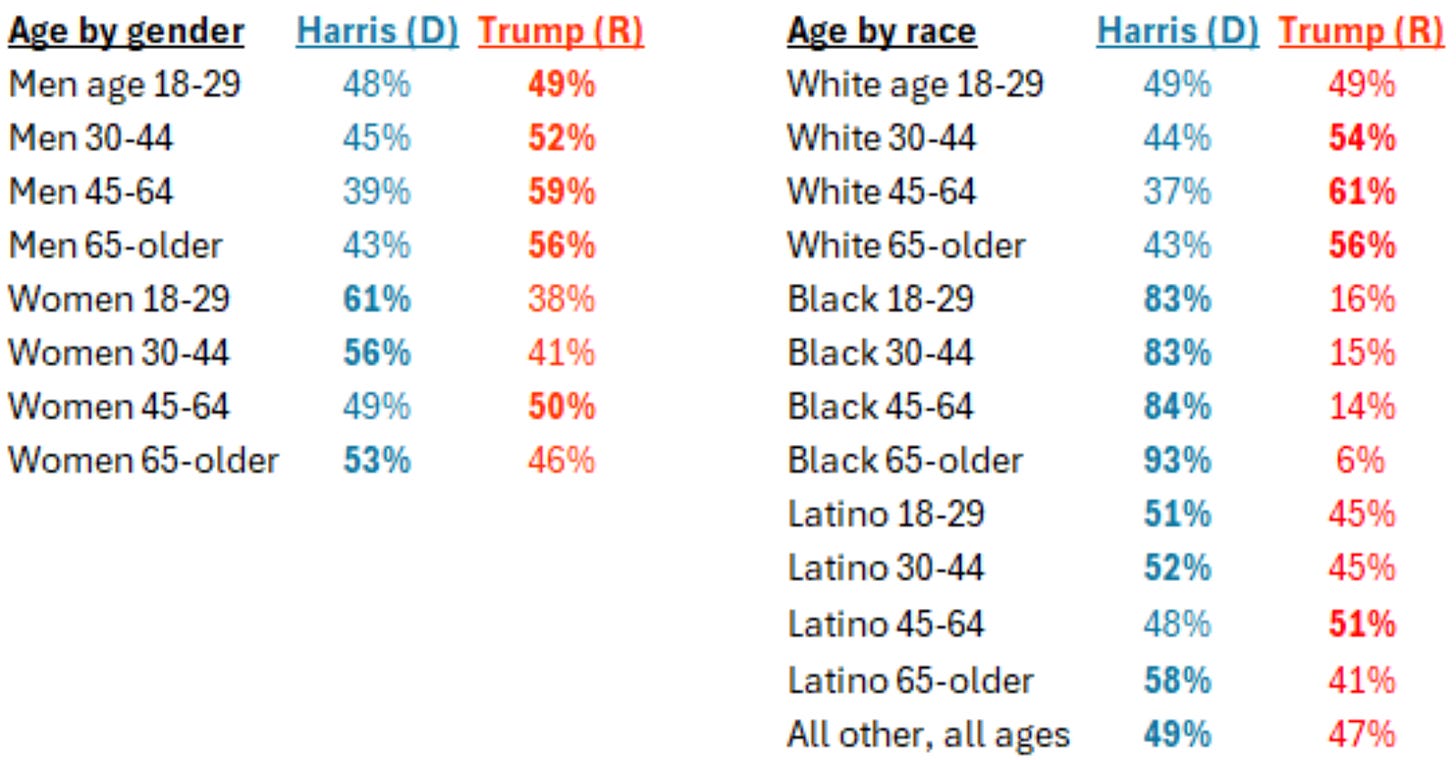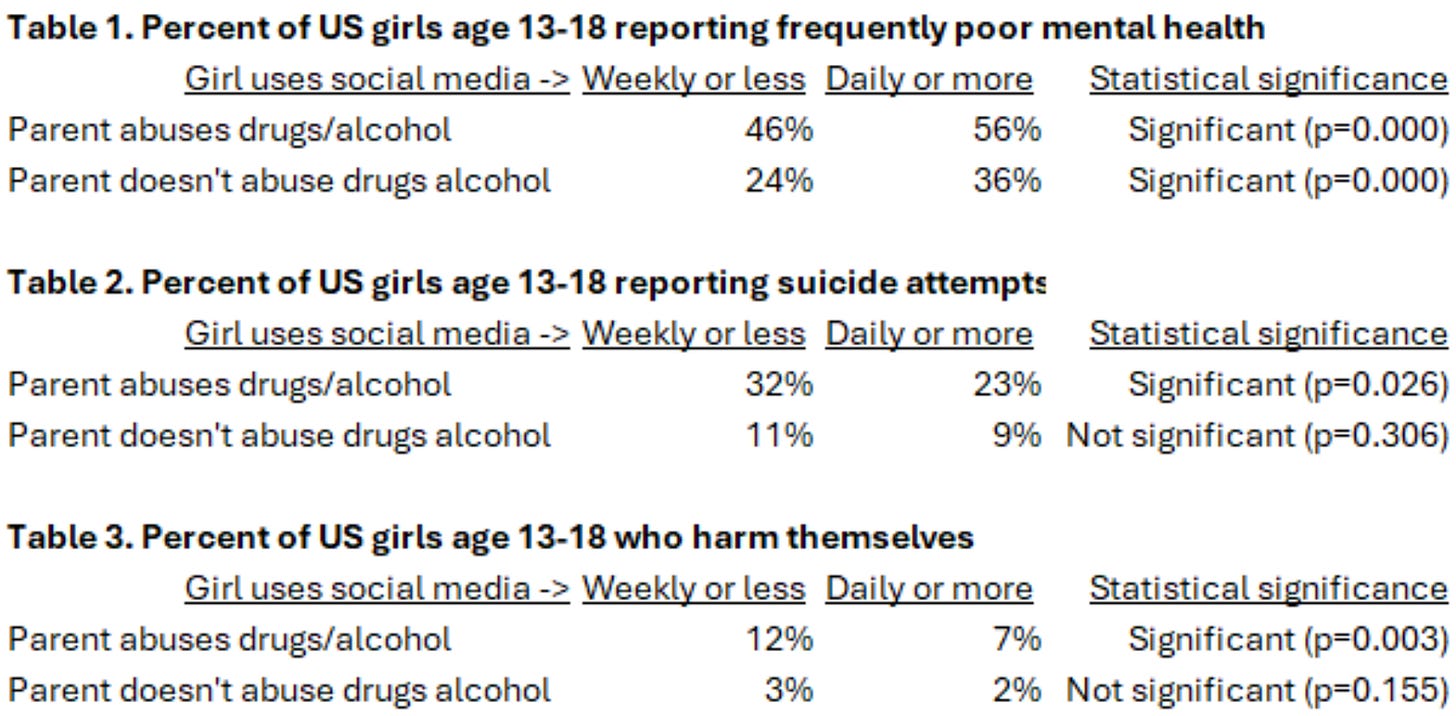Progressives’ brainless disdain for young people, Part II
Mike Males, Principal Investigator, YouthFacts.org| December 2025
They’re at it again. Consider this my self-therapy.
A day after posting my complaint about progressives’ post-election return to trashing the young people who most vigorously support progressive causes, I made the mistake of listening to Bitchuation Room’s Francesca Fiorentini (age 42) and Majority Report’s Emma Vigeland (age 31) prove once again, with the latter’s nasty quips, why I ended my subscription to Majority Report a year ago.
Sabotaging their progressive takes, Vigeland’s and other leftist podcasters’ rants against young people are as crazed and bigoted as any MAGA ranting against transgenders, inner-citians, and dark-skinned immigrants.
(Vigeland is just one mooer in the herd, as I’ve pointed out. Breaking Points’ sorta-conservative Emily Jankowski demeans the young as suffering “undeveloped brains;” sorta-conservative cohost Saager Enjeti berates them as criminals and online degenerates; definitely-leftist cohosts Ryan Grim and Ball dismiss the young as social-media-duped groypers; Kyle Kulinski constantly sneers the young are “black-pill” 4chan morons; Hysteria’s Erin Ryan and Alyssa Mastromonaco demean young adults’ “undeveloped frontal lobes” and “not-good ideas;” Bitchuation Room’s Francesca Fiorentini berates the young as social-media brain-rotted Nihilistic Violent Extremists; on and on.)
Vigeland’s two dumbest comments this week (after she and Fiorentini admitted young people are the vanguard of liberal-left causes like Palestinian rights) were to insist that young people have “undeveloped brains,” and that older progressives such as herself enjoy the privilege to graciously expect “young people,” namely “young men,” to “apologize” for supporting Trump.
Let me repost – again, wearily – the networks’ definitive 2024 election exit poll of 23,000 voters the Vigelands and other progressive podcasters of the world should damn well know about or have the decency to shut up if they don’t:
Table 1. Who voted for Trump in 2024?

Source: CNN (2025).
The claim that “young men” are Nazi/MAGA/rightists whose repenters need “forgiving” by progressives (who Vigeland gave attention to after complaining that “young men” get too much media attention) is conceited, anti-youth hate speech.
Now, it is true that men ages 18-29 did vote for Trump by a whopping 1 point (more recent polls and elections show young men moving rapidly to the left), while Vigeland’s female age eschewed Trump by 15 points. However, young Whites voted against Trump more than older Whites, including Vigeland’s own 30-44 age group.
But if Trump-voting is the sin requiring penance, look at the ages/sexes from which Vigeland should be demanding apologies: all Whites over age 30; men age 45-64 (the age of Vigeland’s co-host, Sam Seder), men age 65+, men age 30-44, Latino men age 45-64, women age 45-64, and only then, men age 18-29… along with 41% of her own cohort.
But liberal/left commentators do not collectively vilify older ages and their “deteriorated brains” for right-wing proclivities. By Vigeland’s logic, every cohort, including her own, requires forgiveness by women ages 18-29, the most anti-Trump age demographic.
NO! The problem is NOT “undeveloped brains”
Leftist FDR said young people’s ideals were the key to improving the world. Conservative Churchill said the young have hearts but not brains. By today’s liberal/left “development” dogma, the young have no heart and no brains, yet vigorously support leftist causes.
Why do so many progressives flock to the “brain development” argument (a throwback to 19th century biodeterminism) when youth rights and socioeconomic arguments are vastly more liberal and fact-based?Do progressives listen to their own podcasts? Are they saying progressives have “less developed brains” and are unable to understand consequences? Are they saying progressive ideas are “not good”?
The “brain development” myth (originally concocted 30 years ago to win lighter sentences for a handful of juvenile murderers) was refuted in the 2010s by the demise of functional Magnetic Resonance Imaging (fMRI) brain-scanning on which the 1990s-era “science” was based, and the massive improvements in Gen Z behaviors demolishing the myth of the “risk taking” adolescent. Unfortunately, it still hangs on among interests like the Sentencing Project that should know better.
In fact, there is no “developed brain;” the brain changes throughout life. Biodeterminists could blame podcasters’ anti-youth bigotries on their over-30-age loss of memory and learning genes and decline in cognitive capacity. But that would be unfair.
Now, the big question prompting current idiocies
Are Jeffrey Epstein and ilk evil, depraved exploiters? YES.
Not because the brains of the teenaged females he recruited lacked the “developmental” capacity of his mature, 50-aged male brain to make reasoned decisions – that’s as ludicrous as it sounds.
Rather, Epstein’s criminality derives from gross power imbalance. Society arbitrarily awards his aging-male status vast resources, rights, and power that are denied to young people. Epstein’s recruiters made the imbalance even more exploitable by targeting impoverished, abused girls with few options rather than, say, trolling middle schools in toney Palm Beach (median income, $175,000). I once taught at an upscale alternative high school. The students there would never be sex-trafficked; they enjoyed far better choices.
A real progressive argument for youth
Brain development is not the problem, as the vast differences in risk by teens of differing poverty levels and family abuses show.
The real reason American society has no right to punish teens like adults for similar actions is because American society accords teens vastly fewer legal rights, control over their environments, economic wealth, and independence than adults – a crucial, ignored point Supreme Court Justice Anthony Kennedy made in his famous Roper v Simmons opinion restricting the juvenile death penalty.
The best analyses show there is no “developmental” hierarchy, at least not between ages 12 and 70 or so. Adolescents have more flexible brain physiology with more open synapses affording broader ranges of thinking, while over-25 grownups have more efficient, “pruned” neural pathways promoting specialization. These types of thinking – general tendencies, not hard wirings – ideally work together to fashion societies able to meet changing conditions with innovation and focus.
Traditional wisdom and experience were vital to survival in tribal cultures. Now, expanded thinking is crucial to survival across global, long-term dimensions. Diverse ways of thinking are needed – the experiences of immigrants adapting to new cultures, of young people more adept with emerging technologies and ways of living together, and older people who bridge past and present. To call one kind of thinking “inferior” or “undeveloped” (as right-wing biodeterminists and too many progressives do) sabotages the diverse perspectives globalizing future-facing societies demand.
Human societies have been proving for millennia that they will not protect young people against predation, other than by ineffective supervision regimes restricting mainly girls’ lives. The confused, belated, repressed response to Epstein is only the latest example, and only among the rare cases that become known.
The remedy is for young people, whose behaviors in Gen Z are now healthier than those of older ages, to assume the power and resources to protect themselves. That remedy is sabotaged by progressives’ baseless insistence that young people have inferior “undeveloped” brains and bad thinking.
Progressives’ rising contempt toward young people is very disturbing. It shows that even among those professing respect for science and egalitarian values, the liberal-left simply indulges self-flattering myths to demean a young constituency whose support they depend on. That truly is bad thinking.







